In recent years, the epidemic situation has often discouraged us from getaways, but now it is especially worth visiting the Museum Garden surrounding the Hungarian National Museum - as it has undergone a complete renovation a few years ago. A rich publication can help us in our walk, the Museum Garden Guide, which was created thanks to the many years of research work of Béla Debreczeni-Droppán.
The volume reveals the history of the garden of the Hungarian National Museum and can be considered exceptional in its content: no detailed publication has been made before about the Museum Garden, which covers every detail from the most important historical events of the site to the evolution of its vegetation, and the monuments located in it. The depth of research in the more than 200-page work is evidenced by a number of citations and around 200 image illustrations (including lithographs, maps, blueprints, and, of course, old and contemporary photographs).
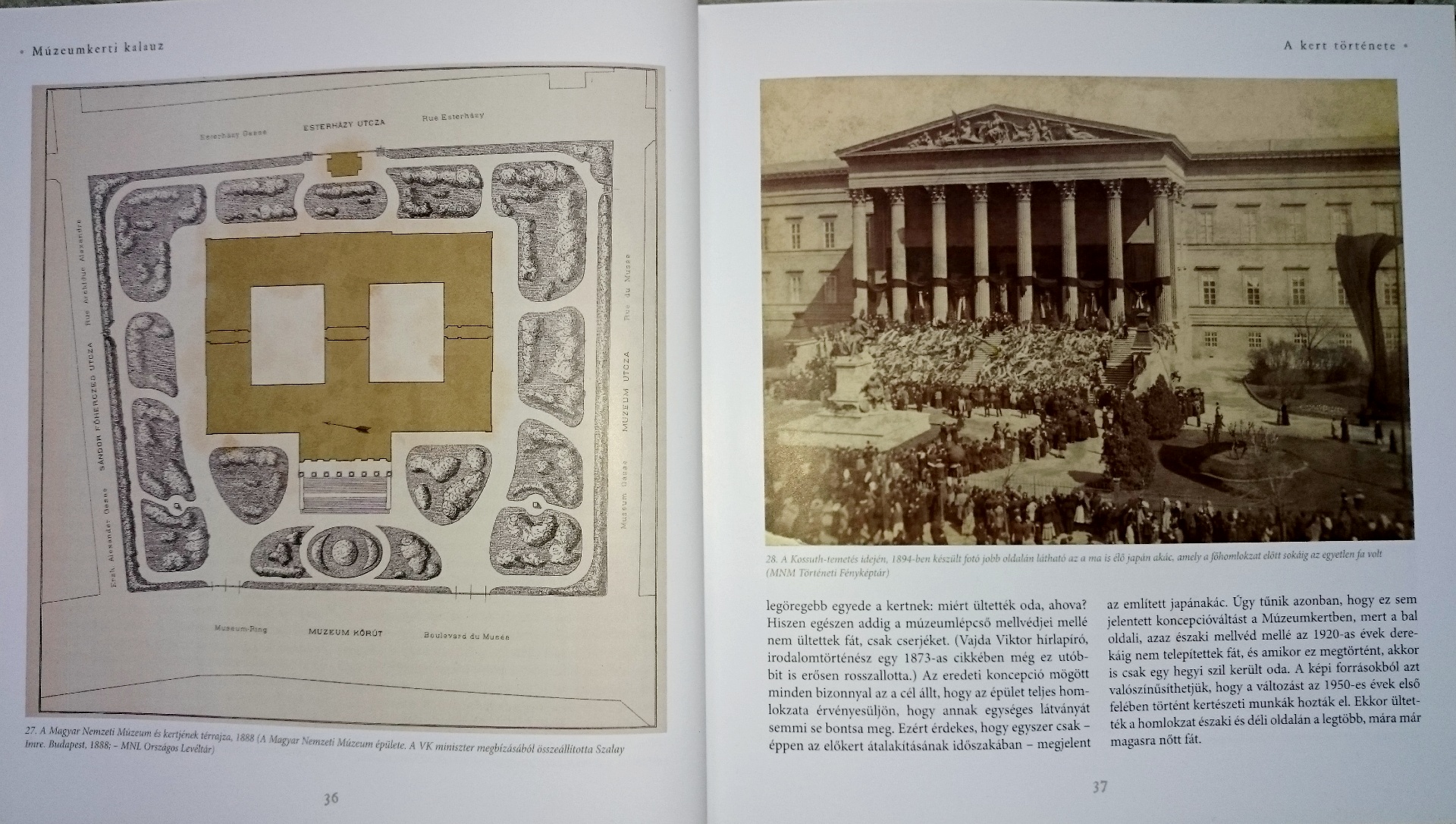
Rich imagery helps to get to know the conditions and events of the time (Photo: pestbuda.hu)
The volume begins with the prehistory of the Museum Garden, dating back to the 18th century: we learn how the area initially served as a thriving archbishop's estate and then became the property of the state. Along the prehistoric descriptions (for example, the development of land management conditions) we reach the birth of the National Museum building: it turns out, among other things, that the museum palace designed by Mihály Pollack was already done years before the scaffolding was demolished.
Of course, the main role remains in the garden around the building: we can read about the construction of the initial “junk” fences or luminaries, but also about the landscaping ideas, and we can see how untidy the situation was in the area even on 15 March 1848.
The real nature of the garden may have been born after the War of Independence, on a very bumpy road: topics such as planting challenges, aspects of placing the benches or setting up iron fences are covered. There are separate sub-chapters on the transformations and events at the end of the century: we go from the care of private entrepreneurs in the Museum Garden, which sparked a debate, to the birth of its own head gardener position.
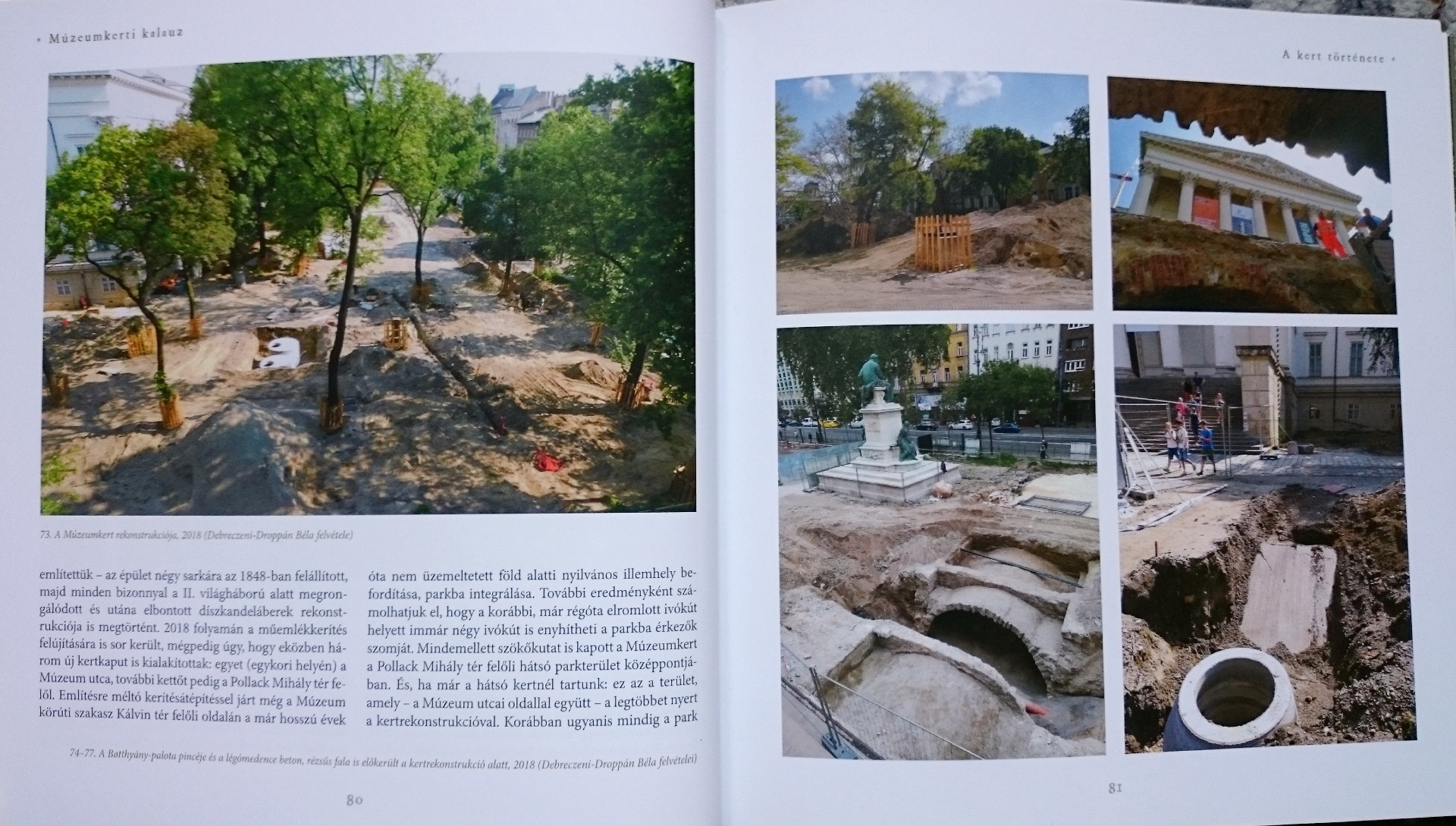
Details of the reconstruction that took place in 2018–19 (Photo: pestbuda.hu)
From the part dealing with the first half of the 20th century, we learn how many statues were placed in the garden, or that the great devastation of the windstorm a few days before the outbreak of World War I did not escape even the attention of the press. We can get to know the work and efforts of the main gardeners of the age (Ferenc Vanek, then Ferenc Bezdek), as well as the damage and dramatic events that took place during World War II (for example, the fights in the square, and the turn of the Museum Garden into a cemetery). The changes brought about by socialism are not to be missed: how they took the horticultural supervision from the museum, how armed struggles took place there again in 1956, and what later processes led to the historical reconstruction.
A separate chapter highlights the importance of the Museum Garden for holidays and everyday life: during the 1848 revolution, the area was a venue for important gatherings on several occasions. In particular, we can read about the events of the period from March to July, and how, with its naturalness, this area has become a general celebration place on 15th of March.
The book also highlights the functional significance of the garden in terms of relaxation, learning, fulfilled and unfulfilled (degenerating to suicide) loves. For 150 years, a multitude of students studying on the steps of the museum has been a common sight, and the garden has become a place of conscious acquaintance for many young people. The garden also served and still serves as a playground for children: through running races, or even playing with glass balls known from The Paul Street Boys, and today in the form of the Muzi playground made during the reconstruction.
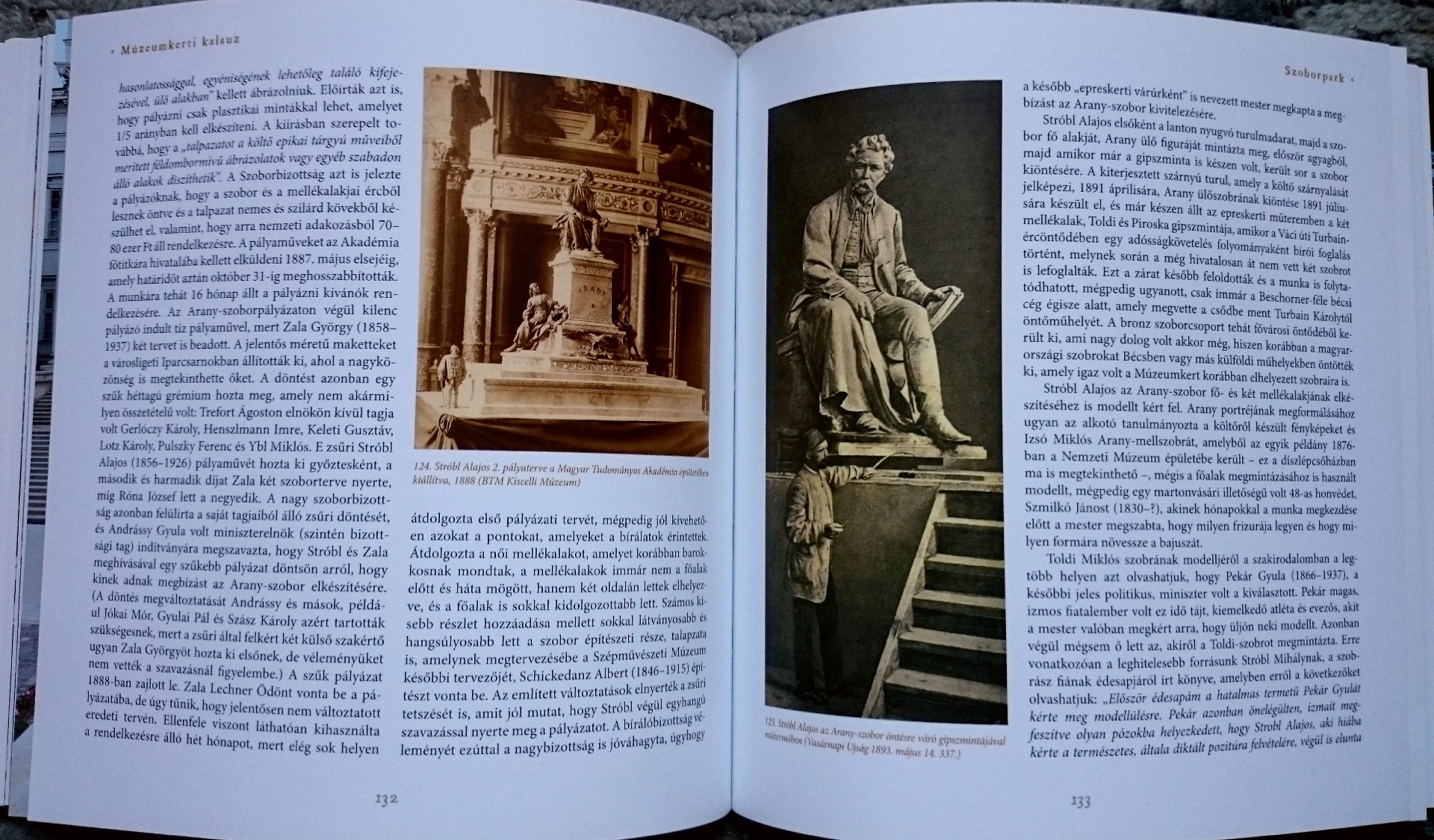
The whole path of the completion of some statues (for example, János Arany) can be traced (Photo: pestbuda.hu)
The rest of the volume pays special attention to the sculptures and monuments of the Museum Garden: it thoroughly covers the history, location and characteristics of each work of art. Why was the statue of János Arany put in front of the main entrance of the museum? Who was the model for the figures of Miklós Toldi and his love, Piroska Rozgonyi? Why was the statue of Ferenc Széchényi, the founder of the museum, relocated several times? How did one of the marble pillars of the Forum Romanum get into the Museum Garden? On what adventurous journey did the statue of Apollo from Belvedere was placed in the garden, and become a constant topic of debate because of its nakedness? Who and why do they commemorate George Washington and Alexander von Humboldt, a German naturalist? All of these are just tiny slices of the descriptions in the book.
Busts and monuments pay homage to several poets (such as Ferenc Kazinczy, Sándor Kisfaludy, Dániel Berzsenyi) and revolutionaries. In addition to the commanders of the Italian and Polish legions of the Hungarian War of Independence (Alessandro Monti and Józef Wysocki), Giuseppe Garibaldi, who fought for Italian unity, was also included. Then we can get to know the memorial plaques and memorial stones of the garden: in addition to Sándor Petőfi, the heroes of the First World War, Sándor Bauer, who set himself on fire in this place, or the American brigadier general Harry Hill Bandholtz, who saved the collection of the National Museum, also received a memorial. The chapter concludes with a presentation of wells, fountains, and Roman-era stone monuments.
The Museum Garden Guide is a thorough, complete guide to this cozy public space in the heart of the city. It promises many new curiosities, not only for fans of general history, but also for lovers of fine arts and gardening.
Cover photo: Museum Garden Guide: The History of the Garden of the Hungarian National Museum (Photo: pestbuda.hu)

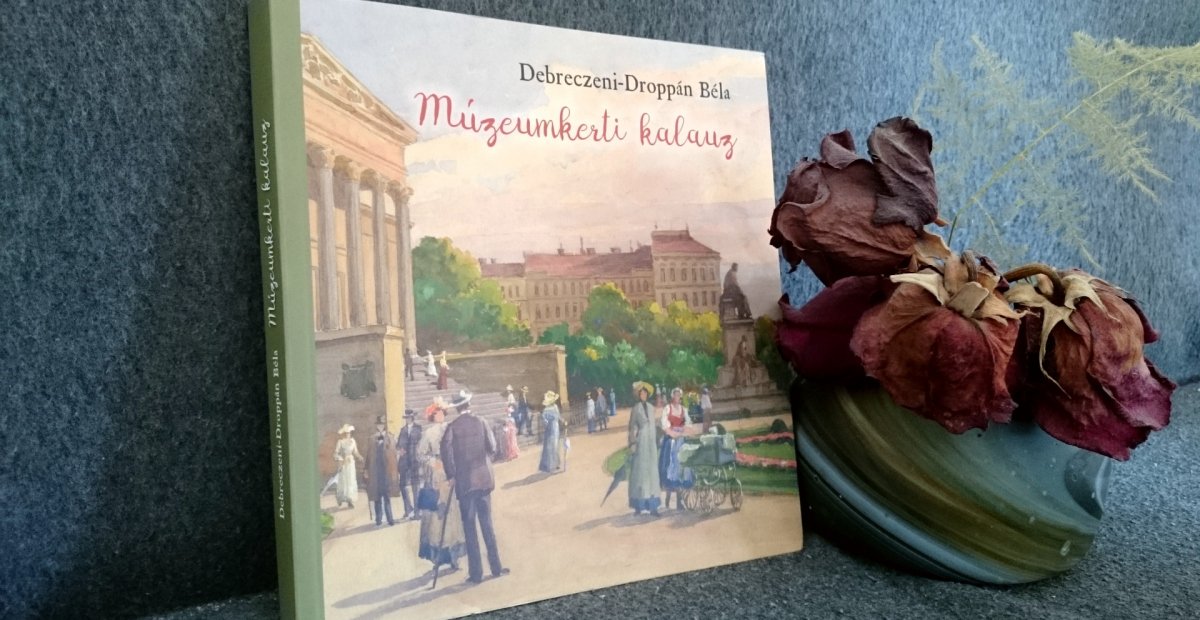

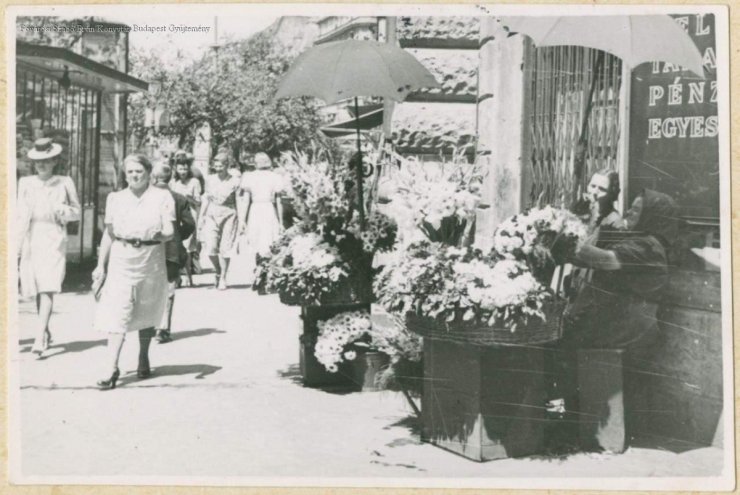

































Hozzászólások
Log in or register to comment!
Login Registration